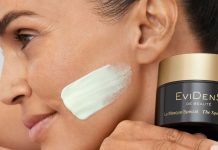In an ideal world, breast reconstruction after mastectomy is a simple and predictable process. Considering reconstruction surgery happens when patients are already facing uncertainties associated with a cancer diagnosis. The same case happens when they figured out that they carry a genetic mutation, which increased their risk of developing cancer.

Unfortunately, this is not the case for women undergoing the procedure. The process can be long and complicated. Since most breast reconstruction procedures require several stages with multiple surgeries that can take three months to a year. Some of the reconstructive procedures have the added strain of weekly office visits for “fills” to expand the skin that will be later used to cover an implant.
After all this effort, it is only fair that the outcome leaves the patients with aesthetically pleasing results – free of pain and with ease. However, some patients travel the long path of reconstruction only to end up with the result that is not acceptable for one of the many reasons.
Common Reasons Patients Are Not Happy With Their Reconstruction
What do dissatisfied patients commonly report about their reconstructed breasts?
- Disproportion – Patients describe disproportion as lopsided, uneven, asymmetric and unbalanced. The basic problem is that there is a difference in shape, volume or both between the left and right reconstructed breasts.
- Deformity – Any reconstructed breast has an irregular shape. Deformities can be limited to a small part of a well-shaped breast. The most common example of this is a concavity or depression on the uppermost aspect of the breasts.
Other deformities can be more generalized, like the shape does not look like the natural shape of breasts.
- Pain – Pain that persists six months after the surgery is not likely to improve. One of the common causes we see in our practice comes from implant reconstructions performed under the pectoralis or chest muscles. In cases like this, the muscle stretches over the implant that usually leads to chronic discomfort, likewise the unwanted movement of the implant (animation deformity).
- Abnormal animation – As mentioned, subpectoral reconstruction can sometimes move the implants with arm motion.
The amount of motion can vary from faint twitching that is barely noticeable to dramatic jumping of the implant on the chest wall which is evident through clothing.
Recommended Solutions To These Problems
The good news is that in most cases, there are solutions for these problems. These are as follow:
Fat grafting – This procedure transfers fat from one part of the body (i.e., usually the belly, hips or thighs) and places it in the chest region where it can be used to fill out small grooves or uneven areas.
- Capsulectomy and implant exchange – These procedures help remove hardened capsules that can sometimes form around implants (capsular contracture). It also provides a new pocket for the placement of a new implant that can be tailored to improve symmetry.
- Conversion of implants to pre-pectoral pocket – For patients who have an implant under the muscle and experience pain and animation deformity, changing the location of the implant (on top of the muscle) can lead to major improvements. Improvements include less pain and more appealing appearance of the breasts.
- Converting to natural tissue – If an implant reconstruction does not turn out satisfactory, converting natural tissue option, such as the DIEP flap, is often good. While this involves a moderate amount of additional surgery, many patients who chose to do this are satisfied with the effort and results.
A Take-Home Message
 Being dissatisfied with the outcome of your breast reconstruction is fine. Most likely, a revision or redo procedure is offered to improve no matter what type you chose to have.
Being dissatisfied with the outcome of your breast reconstruction is fine. Most likely, a revision or redo procedure is offered to improve no matter what type you chose to have.
It is worth noting too that the Women’s Health and Cancer Rights Act of 1998 (WHCRA) covers revision and redo procedures. All of this you may discuss with your board-certified plastic surgeon during your consultation.
About Ergun Kocak, MD
Dr. Ergun Kocak is a board-certified plastic surgeon in Ohio. He went on to serve plastic surgery residencies at Ohio State University Hospital before he co-founded Midwest Breast & Aesthetic Surgery.











